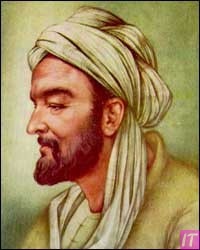Introduction to Bo Ali Sina: The Pioneer in Medical Science
Bo Ali Sina, known in the Western world as Avicenna, is one of the most influential figures in the history of medical science. Renowned for his comprehensive works and profound insights, Bo Ali Sina’s contributions have left an indelible mark on the development of modern medicine. His brilliant synthesis of knowledge from various cultures and traditions laid the foundation for numerous medical practices that are still in use today. Through his meticulous observations, methodical approach, and innovative techniques, Bo Ali Sina established himself as a pioneer whose influence transcended geographic and temporal boundaries.
Early Life and Education of Bo Ali Sina
Born in Afshana, near Bukhara, in present-day Uzbekistan around 980 CE, Bo Ali Sina demonstrated exceptional intellectual abilities from an early age. His father, an esteemed scholar, ensured that Sina received a comprehensive education in diverse fields including philosophy, natural sciences, and medicine. By the age of ten, Sina had memorized the Quran and was well-versed in several other disciplines. Influenced by the rich scholarly environment of Bukhara, he continued his education under the guidance of renowned tutors, who recognized his prodigious talents.
Sina’s early exposure to various fields of study fostered his interdisciplinary approach. His intellectual curiosity and relentless dedication led him to master Greek, Persian, and Indian medical texts well before his teenage years. By the age of 18, Sina had already cured the local ruler of a serious ailment, earning him widespread recognition and access to the ruler’s extensive library. This period marked the beginning of his lifelong pursuit of knowledge and innovation in medicine.
His academic journey was characterized by rigorous self-study and critical analysis of prevailing medical theories. He meticulously documented his observations and experiments, laying the groundwork for his later works. The early influence of Greek physicians such as Hippocrates and Galen, combined with his own empirical investigations, enabled Sina to challenge and refine existing medical doctrines. This unique fusion of inherited knowledge and original thought became a hallmark of his medical philosophy.
Bo Ali Sina’s Groundbreaking Contributions to Medicine
Bo Ali Sina’s contributions to medicine are vast and multifaceted, reflecting his profound understanding of human health and disease. His work extended beyond mere compilation of existing medical knowledge; it encompassed original research, innovative techniques, and new theoretical frameworks. One of his major contributions was in the field of diagnostic methodology. Sina emphasized the importance of comprehensive examination and detailed patient history, which are now fundamental principles in modern medical practice.
He also made significant advancements in understanding infectious diseases, recognizing the contagious nature of certain illnesses long before the advent of germ theory. His recommendations for quarantine and hygiene practices were revolutionary for his time and crucial in controlling epidemics. Furthermore, Sina’s insights into the psychosomatic relationship underscored the interplay between mind and body, foreshadowing modern psychoneuroimmunology.
In addition to disease diagnostics and psychosomatic medicine, Bo Ali Sina made substantial contributions to anatomy and physiology. His description of the cardiovascular system, including the function of the heart and blood circulation, showcased remarkable accuracy given the limited technology of his era. Sina also introduced novel surgical techniques and instruments, many of which remained in use for centuries.
The Canon of Medicine: Bo Ali Sina’s Magnum Opus
The “Canon of Medicine” (Al-Qanun fi al-Tibb) stands as Bo Ali Sina’s most celebrated work, embodying his encyclopedic knowledge and innovative spirit. Structured into five volumes, this magnum opus systematically addresses a wide range of medical topics, serving as a comprehensive reference for centuries. The first volume deals with basic medical science and philosophy, emphasizing the importance of understanding the principles underlying health and disease.
The second volume is dedicated to the Materia Medica, providing detailed descriptions of various drugs and their therapeutic uses. Bo Ali Sina meticulously cataloged over 800 remedies, drawing from his own observations and ancient sources. This volume laid the groundwork for pharmacology, highlighting the need for evidence-based evaluation of medicinal substances.
The third volume discusses diseases affecting specific organs, offering insights into pathology and treatment. Sina’s diagnostic acumen is evident in his precise differentiation between similar diseases, a practice that remains central to modern clinical medicine. The fourth volume focuses on general medical conditions such as fever and inflammation, incorporating preventive measures and holistic approaches to health.
The final volume covers compound medicines and their preparations, emphasizing the importance of proper dosage and administration. The Canon of Medicine’s systematic and scientific approach earned it a place in medical curricula across Europe and the Islamic world, profoundly influencing medical education and practice.
Legacy of Bo Ali Sina in Modern Medical Practices
The enduring legacy of Bo Ali Sina is reflected in numerous aspects of modern medical practice. His holistic approach to patient care, emphasizing both physical and psychological well-being, continues to resonate in contemporary healthcare. The principles of comprehensive diagnosis and patient-centric treatment advocated by Sina have become cornerstones of modern clinical medicine.
Moreover, his contributions to pharmacology have laid the foundations for the development of new drugs and therapeutic agents. The methodical documentation and systematic classification of medicinal substances in the Canon of Medicine provided a model for modern pharmacopoeias. Sina’s insights into the importance of dosage and drug interactions remain relevant in the context of modern pharmacotherapy.
Sina’s influence extends to medical ethics, where his emphasis on professional conduct and moral responsibility guides contemporary medical practitioners. His principles of empathy, compassion, and integrity set high standards for medical practice, shaping the ethical frameworks that govern patient care today.
Furthermore, Sina’s interdisciplinary approach has inspired integrative medicine, which combines conventional and alternative therapies to enhance patient outcomes. His recognition of the interconnectedness of different systems within the body prefigured the biopsychosocial model, which acknowledges the multifactorial nature of health and disease.

Bo Ali Sina’s Innovations in Pharmacology
Bo Ali Sina was a trailblazer in the field of pharmacology, making significant strides in the understanding and application of medicinal substances. His meticulous research and systematic classification of drugs in the Canon of Medicine established a scientific basis for the field. Sina’s pharmacological innovations encompassed the identification, preparation, and therapeutic usage of medicinal plants and compounds.
One of his landmark contributions was the development of a detailed pharmacopeia, describing over 800 drugs. Sina’s classification system was based on the therapeutic effects and pharmacological properties of these substances, enabling a rational approach to drug selection and treatment. His work emphasized the importance of dosage, preparation methods, and potential side effects, which are critical considerations in modern pharmacology.
Sina also explored the synergistic effects of compound medicines, blending multiple ingredients to enhance therapeutic efficacy. This practice of compounding paved the way for the development of complex drug formulations and combination therapies. His emphasis on experimentation and empirical validation underscored the need for evidence-based medicine, influencing the rigorous testing and evaluation of drugs today.
Moreover, Bo Ali Sina’s pharmacological research extended to the study of toxicology. He identified and documented the toxic effects of various substances, providing guidelines for safe usage and antidote administration. His insights into the principles of detoxification and poison management have laid the groundwork for modern toxicology.
Surgical Techniques Described by Bo Ali Sina
Bo Ali Sina’s contributions to surgery were pioneering, introducing techniques and instruments that advanced the field significantly. His comprehensive approach to surgery encompassed meticulous preoperative assessments, innovative surgical procedures, and detailed postoperative care, reflecting a profound understanding of human anatomy and physiology.
One of Sina’s notable achievements was his description of surgical techniques for treating fractures and dislocations. He advocated for precise reduction and stabilization of bones, emphasizing the importance of immobilization to ensure proper healing. His methods for wound management, including the use of sutures and antiseptic measures, demonstrated advanced surgical knowledge.
Sina also introduced several surgical instruments, such as scalpels, forceps, and catheters, many of which form the basis of modern surgical tools. His invention of the use of inhalational anesthesia for pain management during surgical procedures was groundbreaking, predating modern anesthesia practices by centuries. The control of pain and patient comfort during surgery, as advocated by Sina, remains a fundamental principle in contemporary surgical care.
Furthermore, Bo Ali Sina’s surgical expertise extended to intricate procedures such as the removal of tumors, treatment of abscesses, and management of hernias. He documented his techniques with precision, providing detailed instructions for fellow practitioners. His systematic approach to surgical education and practice influenced generations of surgeons, shaping the development of surgery as a scientific discipline.
Bo Ali Sina’s Influence on European Medicine
Bo Ali Sina’s work had a profound impact on European medicine, bridging the knowledge of the Islamic Golden Age with the medical advancements of the Renaissance. His most influential work, the Canon of Medicine, was translated into Latin in the 12th century, becoming a principal reference in European medical schools for several centuries. This cross-cultural exchange enriched European medical knowledge and practice, laying the foundation for the scientific revolution in medicine.
The Canon of Medicine’s systematic approach to diagnosis, treatment, and pharmacology resonated with European scholars, who integrated Sina’s principles into their medical curricula. His emphasis on empirical observation and clinical acumen influenced the development of evidence-based medicine, a cornerstone of modern medical practice.
Furthermore, the dissemination of Sina’s work through translations and commentaries facilitated the spread of medical knowledge across Europe. Prominent figures such as William Harvey and Andreas Vesalius drew inspiration from Sina’s anatomical descriptions and physiological insights. His influence extended to medical ethics and professional conduct, shaping the ethical frameworks that guided European medical practitioners.
Bo Ali Sina’s integration of philosophical thought and medical science also appealed to European scholars, who appreciated the holistic perspective he brought to healthcare. His recognition of the interconnectedness of mind and body foreshadowed the psychosomatic approach that gained prominence in later centuries.
The Role of Bo Ali Sina in the Islamic Golden Age
Bo Ali Sina emerged as a towering figure during the Islamic Golden Age, a period marked by remarkable advancements in science, medicine, and culture. His contributions to medical science epitomized the era’s spirit of intellectual curiosity, interdisciplinary research, and empirical inquiry. As a polymath, Sina exemplified the synthesis of diverse knowledge traditions, drawing from Greek, Persian, Indian, and Islamic sources to create a cohesive medical framework.
The Islamic Golden Age provided a conducive environment for the flourishing of science and medicine, supported by the patronage of rulers and the establishment of institutions such as hospitals and libraries. Sina’s access to the vast libraries of Bukhara and Rayy enabled him to study and assimilate a wide range of medical texts, which he meticulously analyzed and expanded upon.
Sina’s role in the Islamic Golden Age extended beyond his own research; he served as a mentor and teacher, inspiring generations of scholars and practitioners. His works were disseminated widely, forming the basis of medical education in the Islamic world. The emphasis on empirical observation, critical thinking, and ethical practice in his writings reflected the intellectual ethos of the period.
Furthermore, Bo Ali Sina’s contributions transcended medicine, encompassing fields such as philosophy, astronomy, and mathematics. His holistic approach to knowledge and his integration of science and philosophy exemplified the interdisciplinary spirit of the Islamic Golden Age, which paved the way for significant scientific and cultural advancements.
Bo Ali Sina’s Philosophical Views on Healthcare
Bo Ali Sina’s philosophical views on healthcare were deeply intertwined with his medical practice, reflecting a holistic and integrative approach. He believed that health was a state of balance between the body’s humors, and disease resulted from an imbalance. This concept, rooted in the Hippocratic-Galenic tradition, was further refined by Sina’s empirical observations and theoretical insights.
Sina emphasized the importance of preventive medicine, advocating for lifestyle modifications, a balanced diet, and regular exercise to maintain health. He viewed the physician’s role as not only treating illness but also educating patients about healthy living. This preventive approach remains a cornerstone of modern public health and wellness practices.
Moreover, Bo Ali Sina recognized the interdependence of physical, emotional, and mental well-being. He believed that psychological factors could influence physiological health and vice versa, a concept that prefigured modern psychosomatic medicine. His emphasis on holistic healing and the integration of mind and body approaches align with contemporary integrative medicine practices.
Sina’s philosophical views also extended to medical ethics, where he underscored the importance of compassion, empathy, and integrity in patient care. He advocated for the physician’s moral responsibility to act in the best interest of patients, emphasizing the need for trust and honesty in the patient-doctor relationship. These ethical principles continue to guide modern medical practice, underscoring the enduring relevance of his philosophical views on healthcare.

Anatomical Discoveries by Bo Ali Sina
Bo Ali Sina’s anatomical discoveries were groundbreaking, particularly given the limited resources and technological constraints of his time. His detailed observations of human anatomy challenged and refined existing knowledge, contributing to the foundation of modern anatomical science. Through dissections and empirical investigations, Sina made several notable anatomical discoveries.
One of his significant contributions was the description of the cardiovascular system. Sina accurately identified the roles of the heart and blood vessels, outlining the principles of blood circulation long before William Harvey’s work in the 17th century. He also recognized the importance of the lungs in the respiratory process and the interrelationship between the respiratory and circulatory systems.
Sina’s exploration of the nervous system included descriptions of the brain’s structure and function. He identified various cranial nerves and their roles in sensory and motor functions, presenting an advanced understanding of neuroanatomy. His insights into the connection between the brain and body functions were remarkably prescient, foreshadowing modern neuroscience.
Moreover, Bo Ali Sina conducted detailed studies of the musculoskeletal system, describing the anatomy of bones, muscles, and joints. His observations on the structure and function of different organs, including the liver, kidneys, and reproductive system, demonstrated a holistic view of human anatomy. These anatomical discoveries provided a scientific basis for surgical techniques and medical treatments, influencing the development of anatomy as a scientific discipline.
Bo Ali Sina’s Approach to Medical Ethics
Bo Ali Sina’s approach to medical ethics was characterized by a profound commitment to the principles of compassion, integrity, and professional conduct. His writings reflect a deep understanding of the ethical responsibilities of medical practitioners and their role in society. Sina’s emphasis on ethical practice set high standards that continue to guide modern medical ethics.
One of his core ethical principles was the importance of empathy and compassion in patient care. He believed that physicians should treat patients with kindness and understanding, recognizing the emotional and psychological dimensions of illness. This holistic approach to patient care underscores the importance of building trust and rapport in the patient-doctor relationship.
Sina also emphasized the physician’s moral responsibility to act in the best interest of patients. He advocated for honesty, transparency, and confidentiality in medical practice, ensuring that patients were fully informed about their conditions and treatment options. These principles of informed consent and patient autonomy remain fundamental in contemporary medical ethics.
Furthermore, Bo Ali Sina stressed the importance of professional integrity and continuous learning. He believed that physicians should strive for excellence in their practice, constantly updating their knowledge and skills. This commitment to lifelong learning and professional development is a cornerstone of modern medical education and practice.
Sina’s approach to medical ethics also included the principle of non-maleficence, or “do no harm.” He advocated for careful consideration of the risks and benefits of medical interventions, prioritizing patient safety and well-being. This principle continues to guide ethical decision-making in clinical practice.

Bo Ali Sina’s Contributions to Epidemiology
Bo Ali Sina made significant contributions to the field of epidemiology, particularly in understanding the spread of infectious diseases and implementing preventive measures. His observations and recommendations on public health practices were revolutionary for their time and have had a lasting impact on the field.
One of Sina’s notable contributions was his recognition of the contagious nature of certain diseases. He observed that diseases such as tuberculosis and smallpox could be transmitted from person to person, predating the germ theory of disease by several centuries. His insights into the mechanisms of disease transmission laid the groundwork for epidemiological studies.
Sina also emphasized the importance of hygiene and sanitation in preventing the spread of infections. He advocated for measures such as isolation and quarantine of infected individuals, proper disposal of waste, and the maintenance of clean environments. These public health practices were instrumental in controlling epidemics and are still relevant in contemporary epidemiology.
Moreover, Bo Ali Sina’s approach to epidemiology included the systematic collection and analysis of data on disease patterns and outcomes. He meticulously documented cases of infectious diseases, identifying common symptoms, transmission routes, and risk factors. This empirical approach to studying disease dynamics is a cornerstone of modern epidemiological research.
Sina’s contributions to the understanding of epidemic outbreaks and their management have had a profound impact on public health policies and practices. His work on epidemiology highlights the importance of preventive measures, early intervention, and community health initiatives in controlling the spread of infectious diseases.
The Diagnostic Techniques of Bo Ali Sina
Bo Ali Sina’s diagnostic techniques were pioneering, laying the foundation for modern clinical practice. His meticulous approach to patient examination and diagnosis emphasized the importance of comprehensive assessment and holistic understanding of health and disease.
One of Sina’s key diagnostic principles was the detailed patient history. He believed that understanding a patient’s medical history, lifestyle, and symptoms was crucial for accurate diagnosis. His systematic approach to history-taking, including asking detailed questions and noting symptom patterns, remains a fundamental practice in clinical medicine.
Sina also emphasized the importance of physical examination. He developed techniques for examining different body systems, including palpation, percussion, and auscultation. These methods allowed him to assess the condition of organs, identify abnormalities, and differentiate between similar diseases. His approach to physical examination has been refined over centuries but still forms the basis of clinical assessment today.
Moreover, Bo Ali Sina introduced the use of diagnostic tools and instruments. He described the use of the pulse as a diagnostic indicator, recognizing variations in pulse patterns as reflective of different health conditions. His observations on the significance of urine analysis for diagnosing diseases of the kidneys and other organs also demonstrated advanced diagnostic insight.
Sina’s diagnostic techniques extended to mental health, where he recognized the importance of psychological assessment. He explored the relationship between mental and physical health, emphasizing the need for a holistic approach to diagnosis and treatment. His innovative diagnostic methods and comprehensive understanding of health and disease have had a lasting impact on medical practice.
Impact of Bo Ali Sina’s Work on Persian Medicine
Bo Ali Sina’s work has had a profound and enduring impact on Persian medicine, shaping its development and evolution. His comprehensive and systematic approach to medical science integrated empirical research, clinical practice, and philosophical inquiry, influencing generations of Persian medical practitioners and scholars.
The Canon of Medicine served as a foundational text in Persian medical education, providing a detailed and organized framework for understanding health and disease. Sina’s classification of diseases, therapeutic recommendations, and pharmacological insights were incorporated into the curricula of medical schools and continued to guide clinical practice for centuries.
Sina’s emphasis on evidence-based medicine and empirical observation resonated with Persian medical traditions, promoting a scientific approach to diagnosis and treatment. His integration of different knowledge traditions, including Greek, Indian, and Islamic sources, enriched Persian medicine and facilitated interdisciplinary research.
Furthermore, Bo Ali Sina’s work emphasized preventive medicine and holistic health, principles that continue to influence Persian medical practices. His recommendations for lifestyle modifications, dietary practices, and mental well-being aligned with the holistic perspective integral to Persian medicine. This approach to health and wellness continues to be a significant aspect of traditional Persian medical practices.
Sina’s legacy in Persian medicine extends to medical ethics, where his principles of compassion, empathy, and professional conduct set high standards for medical practitioners. His contributions to medical science and his enduring influence







